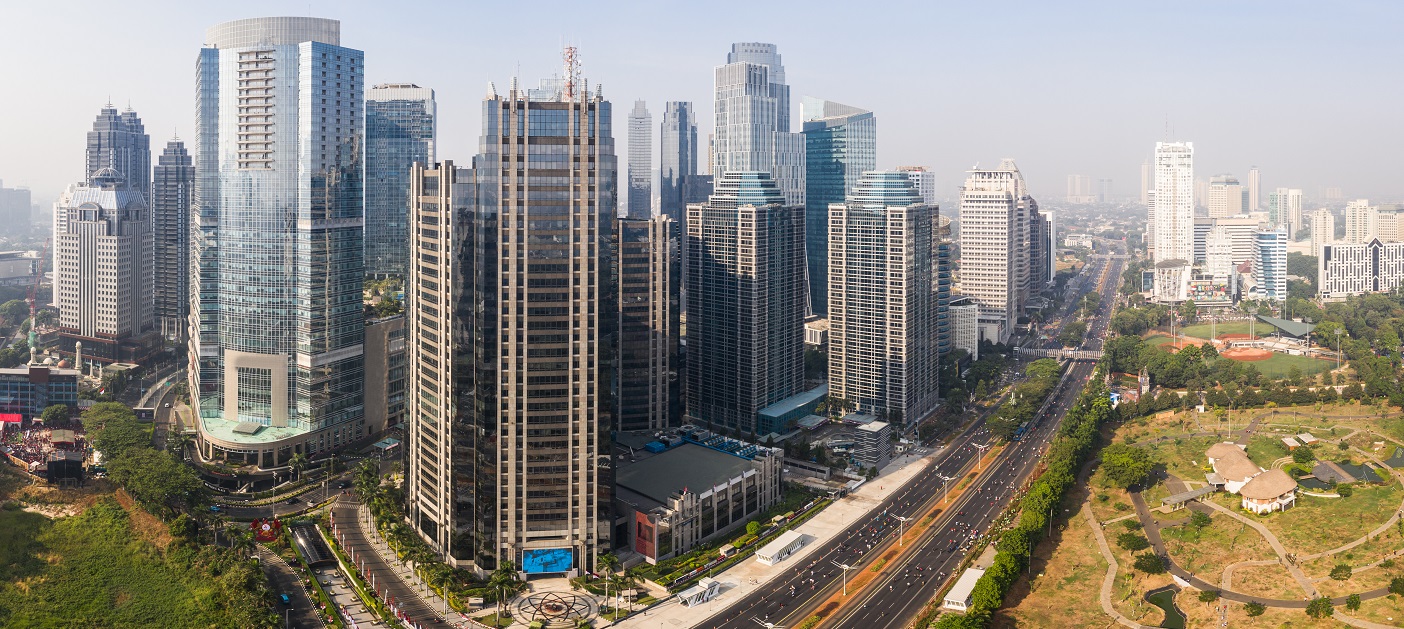- Indonesia wrapped 2022 growth on a strong note and is likely to return to trend at 5% this year
- In the first of a two-part series, we discuss two supportive catalysts
- Efforts to move up the commodity value chain has attracted record FDI
- Revitalizing state-owned enterprises (SOEs) has been a consistent priority
- Focus on productivity gains will underpin recovery over the next few years
Related Insights
- Thailand chartbook: Tourism support; exports challenge20 Feb 2023
- Smaller impetus for further RMB appreciation09 Feb 2023
- DBS Macro Insights Livestream08 Feb 2023

For the detailed note with charts, please download the PDF
The Indonesian economy expanded by 5.3% in 2022, the fastest pace in nine years. All key growth drivers have returned to pre-pandemic levels, with headline GDP up by 7%, consumption by 4%, and exports witnessing the largest 30% pick-up versus late 2019 levels.
As Indonesia emerged from the pandemic, tailwinds from the commodity price upcycle and virtuous efforts undertaken by the government have had a beneficial impact on near as well as medium term growth momentum. This includes efficient handling of the pandemic including the vaccination rollout and stimulus packages to support the economy.
Apart from fluctuations in high frequency data, we expect Indonesia’s growth to stabilise around the 5% mark in 2023, back to the pre-pandemic five-year average 2015-19. There are structural developments underway, benefits of which are likely to have a trickle-down impact over the next few years.
Rising FDI and value-add push in commodities
After a bumpy ride through 2020-21, domestic and foreign investments flows improved sharply in 2022. Total FDI in particular surged 47% yoy last year, to US$ 45 across sectors. Amongst the key sectors, base metals and mining witnessed strong inflows, with Singapore, China and Hong Kong emerging as main investors. With this boost, the total 2022 target for total investments was met at IDR 1207.2trn (Indonesia: Strong FDI beat). 2023 target has been set at IDR 1400trn.
Encouragingly, the spread of foreign investments (realised) by provinces is becoming more broad-based. Java single-handedly still accounts for nearly half of the flows, but its share in the total continues to moderate in the past few years. A bigger share of the investment pie is heading to provinces like Sumatera and Sulawesi. The share of latter has been rising, from ~5% in 2015 to ~17% last year, tracking the growing importance of commodities, especially Nickel which have attracted the interest of offshore investors across the value chain. Sumatera is the other key draw due to the abundance of agricultural commodities including palm oil, rubber, and coffee, amongst others.
Incremental increase in foreign inflows has been witnessed in all three industry buckets – primary, secondary, and tertiary. A large quantum of increase, for instance, between 2020 and 2022, was in the primary and secondary sectors, into mining, basic metal industry and metal goods, chemicals, besides tertiary (real estate and business activities).
One of the key reasons behind this FDI jump is a concerted shift towards downstream commodities, smelters, and related activities. Seventeen smelters have been constructed since 2021, with work on 31 more underway. Of these, the total number of projects and realised investment is highest in Nickel. As a policy preference to move away from ore exports and move by the value chain, restrictions on exports of raw nickel ore have led to a sharp increase in the construction of smelters to produce processed ferronickel and nickel pig iron, with the latter a key ingredient for stainless steel production. Domestic nickel reserves are the largest in the world at ~21mn, with a share of 23.7% of global reserves.
A key feeder industry that has benefited from the nickel reserves is Electric vehicles, especially batteries (~25-40% of EV costs). As capacity continues to be added, Indonesia has emerged as the largest stainless-steel exporter in the past two years, a big shift from being a net importer of processed metals in the past.
Plans are afoot to ban bauxite exports from Jun23 to encourage local processing capacity for aluminium, amongst others. Considering sufficient pipeline interest in the base metals and processing industry, the momentum for Indonesia’s FDI is likely to remain strong over the next 2-3years, carrying benefits by way of higher production, better technical expertise, move up the value chain, improving ecosystem for manufacturing players and positive spill overs on employment and incomes.
Revitalising state-owned enterprises (SOEs) and support for smaller enterprises
State-owned companies have been at the forefront of Indonesia’s economic growth, with the administration focused on revitalising and streamlining these entities.
State owned enterprises’ (BUMN) contribution to the economy is quite substantial, at IDR 371trn or c.18% of 2021 budget through tax, dividends and non-tax revenues. Moreover, the total assets of all BUMN are equal to half of Indonesia’s GDP or around IDR 9,000trn (2021 data). Led by the BUMN Ministry, more has been done to transform these entities, including the creation of holding company and restructuring initiatives.
BUMNs are now clustered into twelve holding companies to support the government’s strategic priorities, improve synergies and to strengthen their capital/funding capabilities. Some of the major holding companies are in the energy, mining, ultra-micro, plantation, pharma, and food supply sectors.
In commodities, to move up the value chain beyond smelters, for instance, the government has pushed for investments in EV battery manufacturing. Indonesia Battery Corporation (IBC) was formed to meet this need, with the consortium involving BUMNs such as MIND ID (Indonesia’s mining holding company), Antam (nickel and gold miner), Pertamina (largest O&G company in Indonesia) and PLN (state owned electricity distribution). The transformation of BUMN has accelerated in the second term of President Jokowi, compared to the first term.
Aside from IBC, the ultra-micro holding is a good example of the potential synergies among BUMN in this sector (between Bank Rakyat, PNM and Pegadaian) in terms of funding and customer data to grow micro borrowers from 15mn in 2020 to 29mn by 2024.
Concurrently, the number of entities has also been reduced to 41 as of end 2022 from 113 in 2019. Around 70 of them are close to not being operational, with plans to streamline the number further to 30 in the next phase (2024-2024) to reap efficiency gains.
In our view, these efforts are under-appreciated, but are crucial to rebalance resources and improve efficiency gains. Between 2005-2020, the government has injected over IDR 250trn to BUMNs but a number are still not performing up to expectations. Funds could be spent in other areas that will have larger impact or lower the burden on the government’s budget.
Few of the relief programs have also been rolled out via the state-owned machinery, to safeguard low-income households. Several programs have been outlined, including Program Keluarga Harapan (PKH) for 10mn households, Food Stamp (Bantuan Pangan Non Tunai) for 18.8mn recipients, Student Aid (Indonesia Pintar) for 17.9mn students from elementary to high school and Universal Health Insurance (PBI) for 96.8mn residents.
As the economy enters an endemic Covid phase, several programs that were available during the pandemic have been discontinued such as cash aid, electricity discount, fuel discount, internet voucher for students and unemployment program.
One that has been retained is the KUR (micro loan program), towards which the government has almost doubled its budget from ~IDR 100trn in 2017 to IDR 190trn in 2022.
The program is distributed by BUMN banks including Bank Rakyat Indonesia as the main distributor of KUR. Under the Ministry of BUMN, the government also has a micro loan program under MEKAR, given to 12mn small and micro businesses. This program is directed at women and the rural population, in particular. Combined with KUR, these programs have reached over 20mn borrowers, a significant number as compared to the 260mn total population of Indonesia.
To read the full report, click here to Download the PDF.
Topic
Explore more
E & S FocusRelated Insights
- Thailand chartbook: Tourism support; exports challenge20 Feb 2023
- Smaller impetus for further RMB appreciation09 Feb 2023
- DBS Macro Insights Livestream08 Feb 2023
Related Insights
- Thailand chartbook: Tourism support; exports challenge20 Feb 2023
- Smaller impetus for further RMB appreciation09 Feb 2023
- DBS Macro Insights Livestream08 Feb 2023




